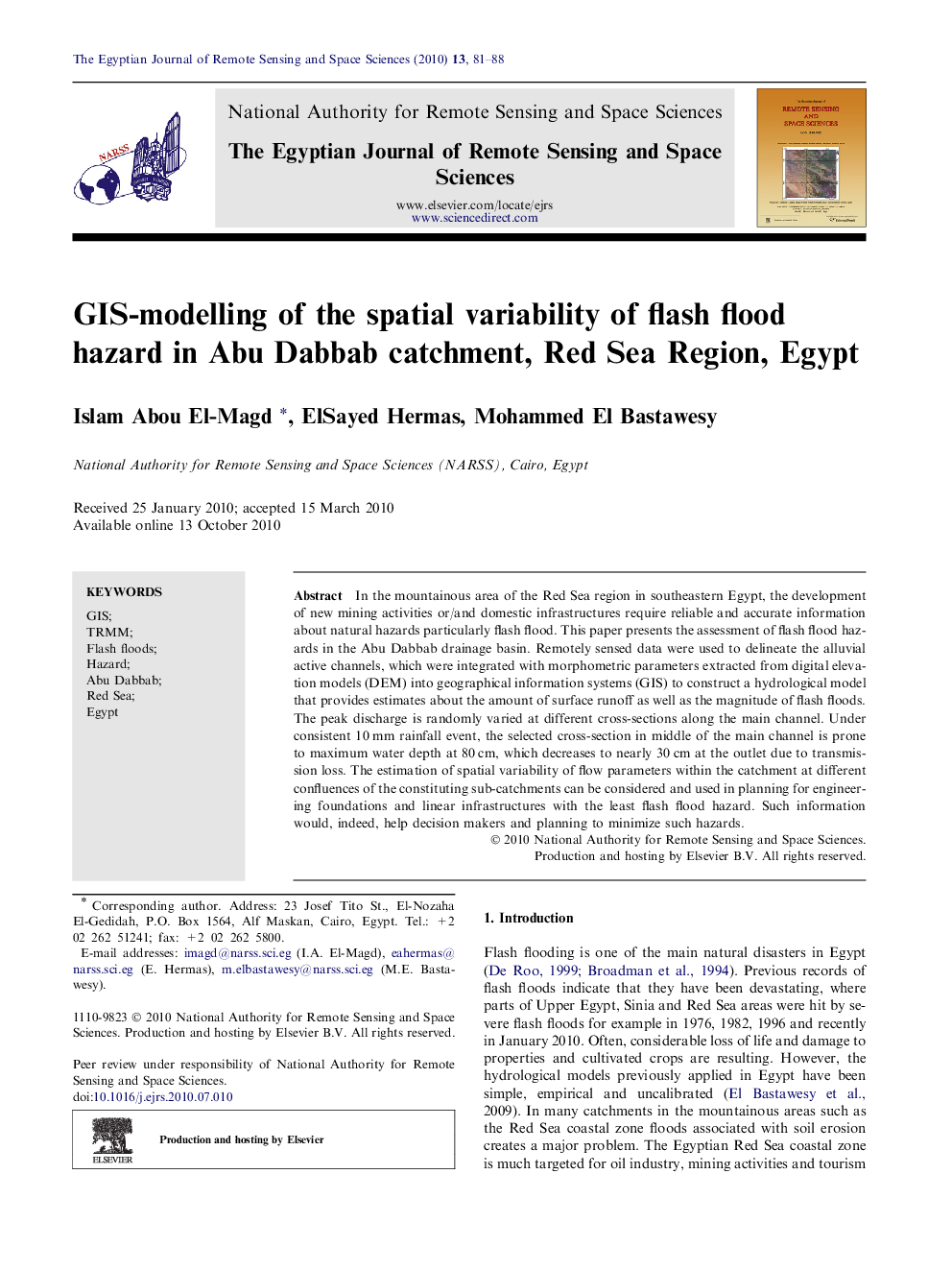| Article ID | Journal | Published Year | Pages | File Type |
|---|---|---|---|---|
| 4681419 | The Egyptian Journal of Remote Sensing and Space Science | 2010 | 8 Pages |
In the mountainous area of the Red Sea region in southeastern Egypt, the development of new mining activities or/and domestic infrastructures require reliable and accurate information about natural hazards particularly flash flood. This paper presents the assessment of flash flood hazards in the Abu Dabbab drainage basin. Remotely sensed data were used to delineate the alluvial active channels, which were integrated with morphometric parameters extracted from digital elevation models (DEM) into geographical information systems (GIS) to construct a hydrological model that provides estimates about the amount of surface runoff as well as the magnitude of flash floods. The peak discharge is randomly varied at different cross-sections along the main channel. Under consistent 10 mm rainfall event, the selected cross-section in middle of the main channel is prone to maximum water depth at 80 cm, which decreases to nearly 30 cm at the outlet due to transmission loss. The estimation of spatial variability of flow parameters within the catchment at different confluences of the constituting sub-catchments can be considered and used in planning for engineering foundations and linear infrastructures with the least flash flood hazard. Such information would, indeed, help decision makers and planning to minimize such hazards.
